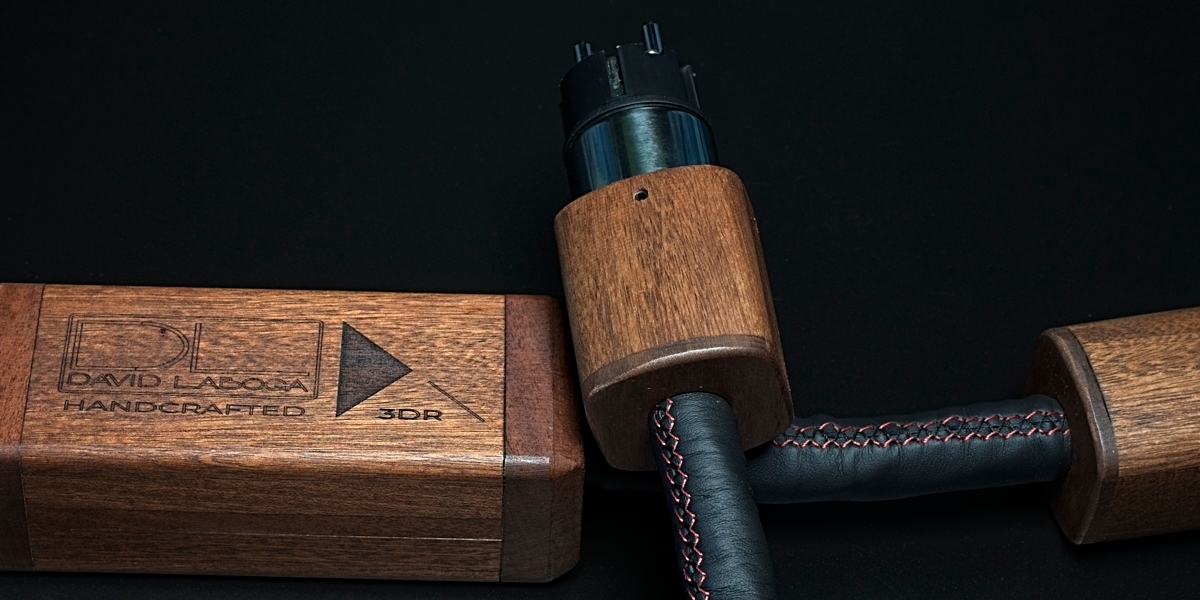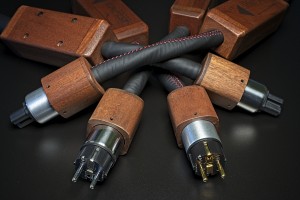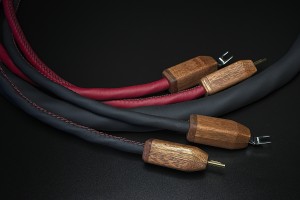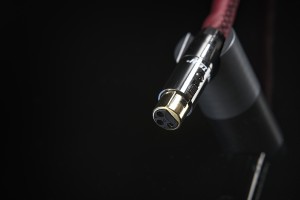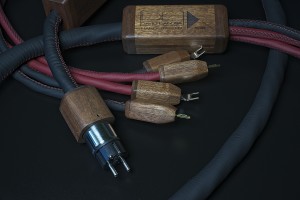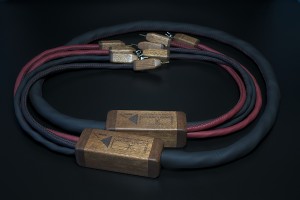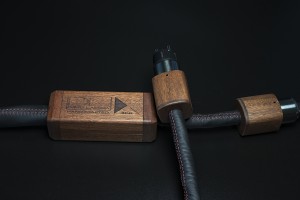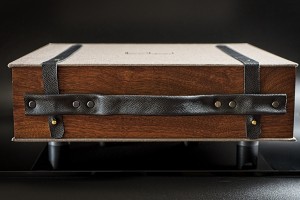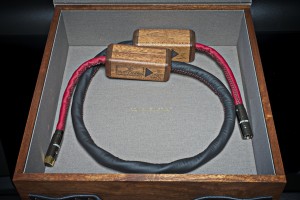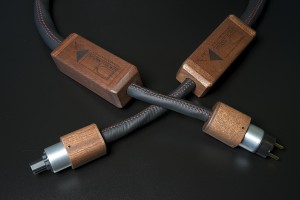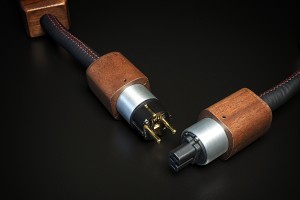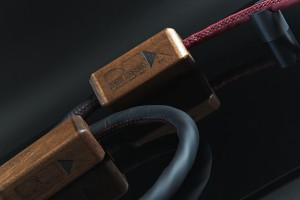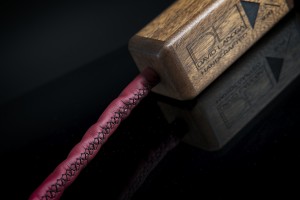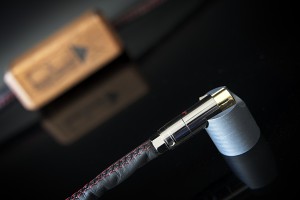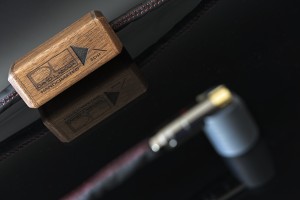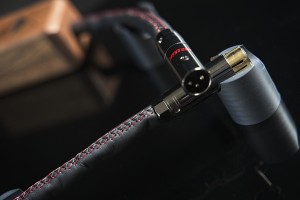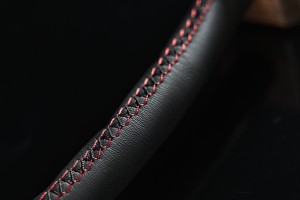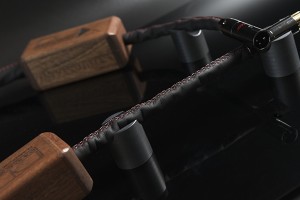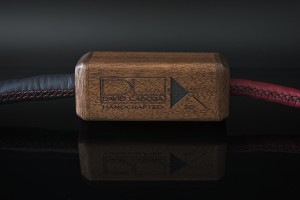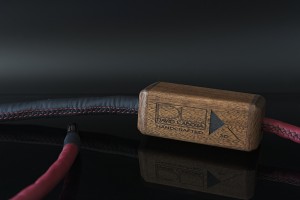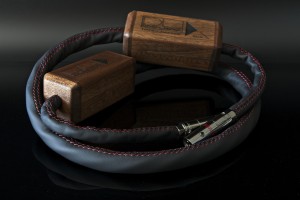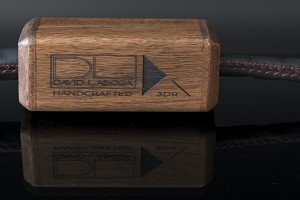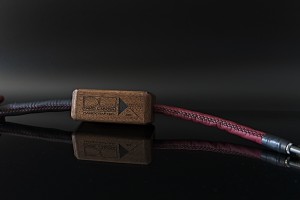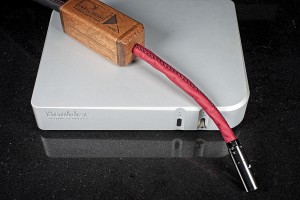After experiencing the high quality of David Laboga Custom Audio digital cables first hand I wanted to find out whether the analog ones were as good. I finally got my chance and would like to share the answer to that question with you. Ladies & Gentlemen, let me introduce DL Custom Audio Connect 3D + 3D-R, the whole set of top analog cables from that brand.
Introduction
David Laboga Custom Audio brand should be already familiar to our regular readers. For one, I reviewed three of their products in the past. The first one was the David Laboga Expression Emerald USB cable (see HERE). The second was Digital Soundwave Sapphire Ethernet (see HERE). Finally, I tested the top-of-the-line Expression Ruby USB (see HERE). Let me add that they are currently all available in mk2 versions. After reviewing these three excellent products, I added Emerald USB and Sapphire Ethernet to my reference system. Obviously, Ruby was even better than Emerald, but there is always the „small issue” of price, or in other words, of what I can, and what I can’t afford.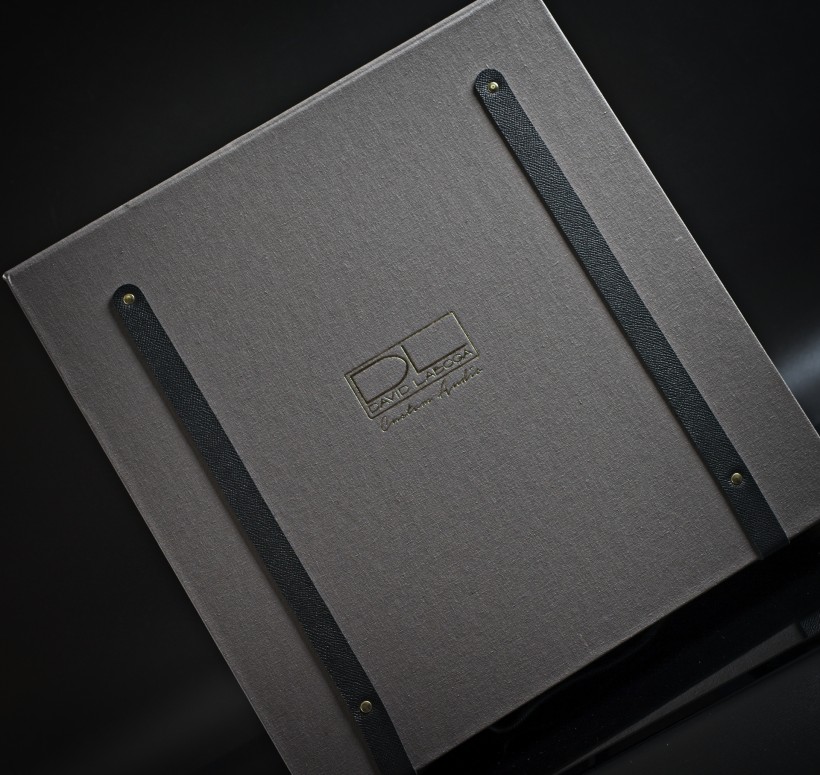
Anyway, ever since I waited for a chance to check out David Laboga’s analog cables in my system. I had a chance to listen to them in various setups at the Munich High End Show, and Audio Video Show in Warsaw, and clearly, these systems sounded very good, but it was hard to tell, how much credit for that should have been granted to the cables. Finally, a few weeks after the Audio Video Show 2022, I received two large boxes from the manufacturer. Not only was I to satisfy my curiosity but I got a chance to get to know the whole loom from the top series, 3D/3D-R Connect. The boxes, or as my daughter called them, suitcases, contained an RCA interconnect, speaker cables, and a power cable. Much later, after weeks of listening to them, I received also an XLR interconnect and a second power cable. The reason why the boxes are so big is the way these cables are made and finished. First of all, there is the natural leather finish (same as of the Sapphire and Ruby digital cables), secondly, there are large wooden „boxes” installed on the cables (I’ll get back to them in a moment). So all together they combine into quite „big”, though reasonably flexible cables.
For those who didn’t read the previous David Laboga Custom Audio Cables reviews, let me just briefly recap the brand’s story. It all started with instrument (mostly guitar) cables that quickly gained traction, and recognition among numerous musicians around the world, including some quite famous ones. The next step for the DL Cables brand was studio cables, which repeated the success of the instrument ones. These allowed the Polish manufacturer to achieve an even bigger reach within, a widely defined, musical community, as they were being used in many recording studios all over the world. Ultimately, DL Cables took also the final step reaching out to „music consumers”, or in other words us, music lovers and audiophiles. The owner of the brand, David Laboga, likes to use the DL Custom Audio brand for the „home-audio” products because it reflects his approach toward the customers. As he says, all his ‘audiophile’ cables share the same DNA, the same sonic character, if you will, that is supposed to convey first and foremost the Music (yes, with the capital ‘M’). In other words, you can always expect this hard to define, but so easy to recognize feature called ‘musicality’.
There are several levels or series, if you will, in the brand’s lineup starting from quite affordable models, and moving up to pretty expensive ones (although still far from the most expensive products on the market). Based on my previous (and continuous) experience with David Laboga Custom Audio digital cables I can confirm, that they all share the same sonic character, and the higher models keep getting more and more refined, basically doing everything „bigger, better, faster, more” (do you recognize the reference? :-)) rather than differently. The entry-level Expression Emerald USB does everything right and has no clear downsides, and I love it in my system. The top model Ruby does the same but serves „more” of everything. Yet, knowing one of them allows you to recognize the brand’s ‘sonic signature’ in any of their products, so you know what to expect when reaching for another model. At least the digital ones that I dealt with so far.
Now, when it comes to his cables, Mr. David Laboga offers almost no information about their design. Why? He assumes that it does not matter how are they built, by rather how they „sound” (influence the sound of the system, obviously). At least that should be the point of any audio product. While we don’t know exactly what is there inside the cable’s sleeve (copper conductors, that’s the only sure thing), the „Custom” in the name reflects the fact, that depending on what sonic result you want to achieve and what components you want to connect, the designer can suggest the best solution including optimal termination. While the cable itself will be the same (I mean, the model of your choice and general type of termination), its sonic character will change (to a point, but that’s what we actually look for in audio, don’t we?) depending of whether one chooses gold-plated or rhodium-plated connectors. In some cases, the optimal choice may be using gold-plated on one end and rhodium-plated on the other, or, say, an interconnect with gold-plated, and speaker cable with rhodium-plated connectors. How many companies do you know that allow you to make such choices, or actually will advise you which model may be best for you based on declared sonic preferences? Surely not the big names. Maybe there are some other boutique brands I am not aware of, but David Laboga Custom Audio is the only one I know that not only allows but advises on customization of their cables so that they fit customers’ needs even better.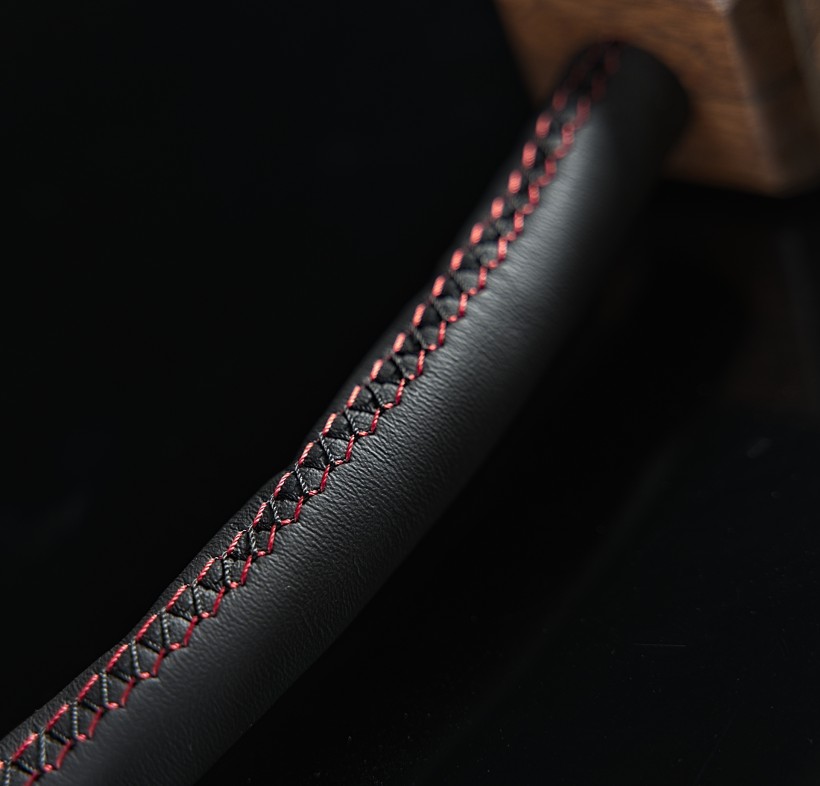
Design and features
As I’ve already mentioned, there isn’t much information available regarding any DL Custom Audio cables. It’s not a unique approach, there are other brands that do the same (from the top of my head – TelluriumQ). On the one hand, the manufacturer doesn’t want to hand out a recipe for his cables to competitors, on the other, it makes sense, that a key factor convincing a potential customer should be the performance, the sound, and not some flowery language or even technical features. So what does one actually know about 3D and 3D-R Connect series cables? Let’s start with the distinction between the two. The ‘3D’ translates into a version with gold-plated connectors, and the ‘3D-R’ into one featuring rhodium-plated ones. All these cables use the same conductors – high-purity, oxygen-free copper. As Mr. David Laboga told me, he generally considers copper as a more ‘musical’ conductor than silver, hence the former is his preferred one.
What he shared with me regarding the 3D/3D-R series is that it took a completely new approach to develop this line based, obviously, on extensive experience not only from designing other home audio cables but also those meant for musicians and studio professionals. While the geometry of each cable and the materials used in them are very important, the finishing touch in each case is the connectors. These were carefully selected (brands and models) to achieve the expected final result – a highly musical, immersive, not-fatiguing sound. That is why, according to David Laboga the connectors must be made of copper, not silver. His choices in some cases are not the obvious ones. XLR plugs for the interconnects were sourced from Neotech (unlike many competitors who use Neutrik), and the RCA ones were from WBT. They can be gold- or rhodium-plated (3D or 3D-R). For the test manufacturer sent me the gold-plated RCA variant and later another one with rhodium-plated XLRs. The first power cable I received for this test featured gold-plated plugs, but the one sent later used rhodium-plated ones.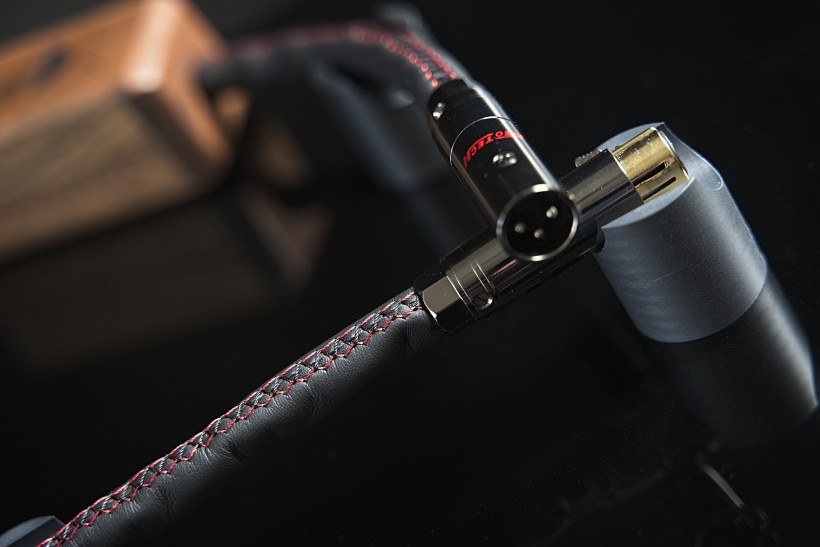
The most interesting (design-wise) is the 3DR-Custom Two-in-One Connect speaker cables. One still doesn’t know exactly the internal design, but what is there to see seems intriguing. Why? Because once I took the cable out from quite a big „suitcase” one could use for a two-week holiday, I noticed that on both ends there are four endings/plugs. Mind you, it is not a bi-wire but a single-wire speaker cable! The four connectors on each end are what the „two-in-one” part of the name stands for. There are four independent runs inside each cable – two ‘pluses’ and two ‘minuses’ (the endings after wooden boxes that act also as splitters are finished with, respectively, red and black leather). The basic ones in the tested 3D-R version (one red, and one black) are terminated with rhodium-plated spades, the secondary ones with gold-plated bananas (it is possible to order a version with gold-plated spades and rhodium-plated bananas, but as Mr. David Laboga told me, he had never sold such version). The connectors are not the only difference as the conductor runs themselves differ as well.
The two „plus” and two „minus” runs are complimentary and are to be used together because each of them offers different sonic qualities and only combined they deliver the complete intended sound. So one thing you have to remember and check before ordering these speaker cables is the connectors in your speakers and amplifier(s). They must be able to accept both, bananas and spades at the same time (!), and not all of them provide such a feature. Now, I also asked whether it would be possible to order this speaker cable terminated with spades only (so four on each end) as I know that some manufacturers (Boulder, for example) use speaker terminals that accept only spades. Mr. David Laboga admitted that he had never built such a version but it would most likely be possible.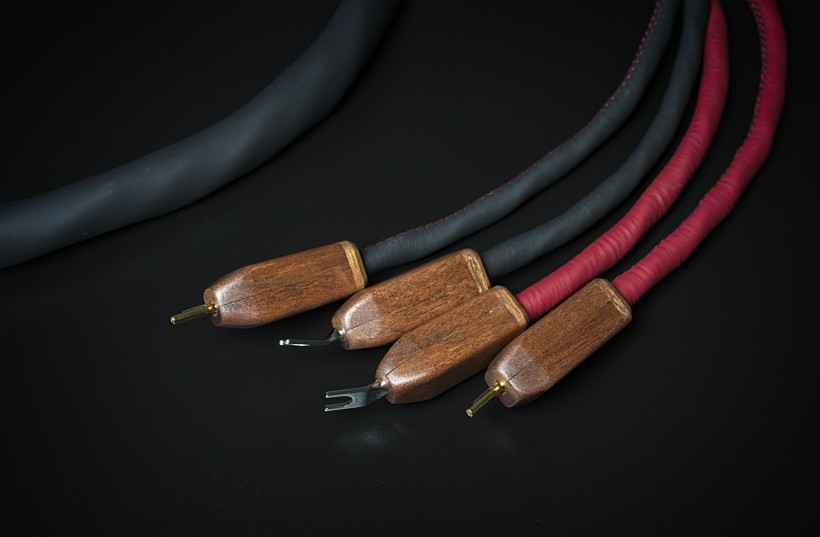
All these cables sport stunning leather sleeves. We know this feature already from Sapphire and Ruby digital cables. Such a luxurious finish not only looks and feels great, but it also has its share in reducing micro-vibrations of the conductors, which positively affects the sonic performance. There is one more feature that all these cables share, namely hand-made wooden boxes. They are made of mahogany and are another vibration-damping element of the whole design. These are not solid wood blocks though, as they hide compartments inside that are filled with a special mix of different mineral stones that act as a filter against unwanted interference, especially against stray electromagnetic fields. Interestingly, there are also much smaller wooden pieces on each cable’s ending, right before the plugs. These surely serve as another anti-vibration component, but most likely are not filled with anything – just solid pieces of wood. Due to the thick leather sleeves, these are not the most flexible cables, but not the stiffest either, quite heavy, but far from the heaviest I’ve ever dealt with. They should be fairly easy to install in a system, although in some cases the wooden boxes may need some sort of support if they were to weigh down the terminals too much.
Sound
So that you are clear about which versions were actually tested, let me just repeat it once more the RCA interconnect featured gold-plated plugs (3D), the XLR rhodium (3D-R), speaker cable rhodium-plated spades and gold-plated bananas, and one power cable came with plugs featuring gold-plated (3D) contacts and the other with rhodium-plated ones (3D-R).
OK, let’s dive in. As already mentioned, I got the whole loom of the David Laboga Custom Audio 3D/3D-R Connect cables – RCA interconnects, XLR interconnects, speaker cables, and two power cables. I tested the RCA IC and speaker cables against Soyaton Benchmark set (you can find the review HERE), the latest addition to my reference system. The late addition to the test, namely XLR interconnect was initially compared to my only one, way cheaper KBL Sound Zodiac, but later also to priced similarly to the DL product, namely van den Hul The CNT. Power cables were compared to another, way cheaper, but offering very good performance, DL Custom Cables model, the N-AC Connect (also with gold-plated contacts) and my old, trusted LessLoss DFPC Signature.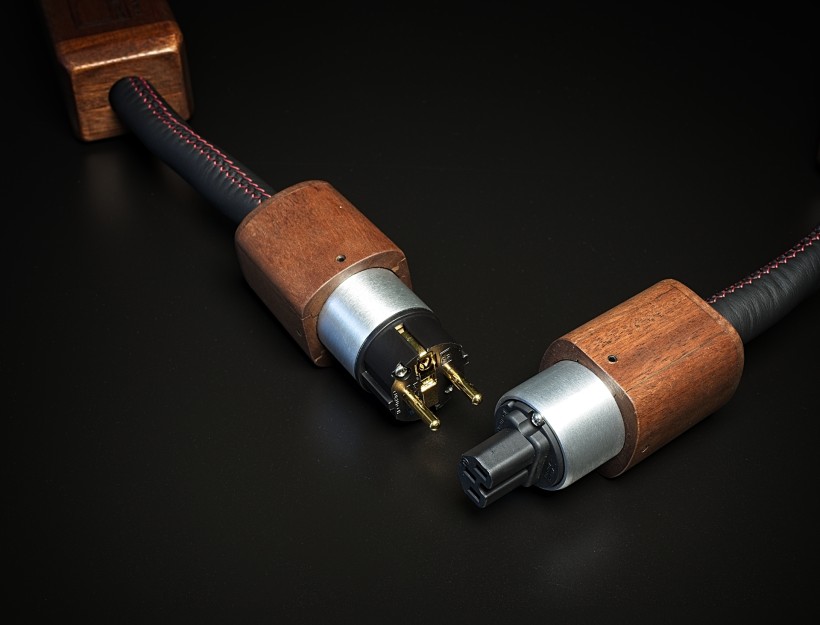
When testing whole sets of cables my procedure is usually the same – I replace one of my reference cables at the time with the tested one, then add another, and another. That’s what I did this time as well, although I changed the order, as I started with the power cable. I simply assumed that it may make the largest difference due to the significant price gap between the one I used on a daily basis and the reviewed one.
DL Custom Audio 3D Connect Power Cable
The tested cable powered my LampizatOr Pacific D/A Converter. Obviously, it took two or three minutes each time to turn off the device, replace one cable with the other one, and turn it back on, and, since Pacific features tubes, I had to wait each time until it was ready to play again. Even though the Pacific, the same as every other tube device, needs several minutes before delivering its optimal performance, the change in the sound was obvious to me from the very first seconds. I don’t mean the details of the change, only the fact, that the sound changed, significantly, I may add. Yes, I know, there are some who believe all cables sound (or rather influence the sound) the same. Yet, for me, the first difference was obvious – with the same volume level settings, the sound with DL Custom Audio 3D power cable was louder (yes, louder), the dynamic range increased, and the whole presentation seemed even more impressive.
These were the first changes I noticed, but not the only ones. The longer I listened to my system with the tested cable powering LampizatOr Pacific, the more advantages of the top-of-the-line cable became obvious. Clarity was the next one. And by clarity, I mean a better definition of each sound and its absence (I mean the pitch-black, total silence between the sounds). That’s what one expects when improving any elements of the power supply system. It all starts with the black (or blacker) background that is a result of a lower noise level. Such a background causes all elements, sounds, details, and subtleties to pop up a bit more. Once they do, the whole sound becomes richer, more precise, and better pronounced – in other words, the resolution further improves. And the resolution is the very foundation of the high-quality sound. Obviously, I’d known before that Pacific deserved an even better power cable than N-AC Connect, but as you well know, these tend to cost a lot, so it had to wait its turn. Testing the 3D Connect was a reminder, that this remarkable D/A Converter still had more to offer.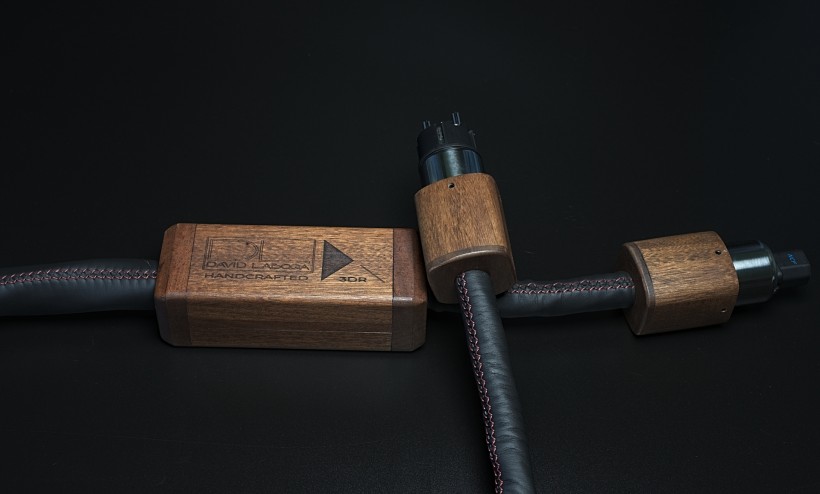
Even such ‘simple’ music, as from Alex de Grassi’s „The World is getting louder”, became richer due to more details, more saturated timbre, the presentation got more open, and… yes, more spacious – that’s what the „3D” in the series name suggested, and it turned out to be true. It was a real pleasure and fun for me (once an amateur guitarist) to get a better insight into Alex’s playing technique, and the beautiful sound of his guitar. Each string’s pluck was better pronounced and differentiated from others, there was also more wood in the sound, hence the sustain and decay phases seemed longer, richer, and more natural. The soundtrack from „Oblivion” on the other hand, proved an advantage of the tested cable in terms of dynamics, this time mostly on the macro-scale, as well as power and energy saturation of the whole presentation, which was clearly superior. There was no doubt, that the 3D Connect power cable allowed my LampizatOr Pacific to spread its wings even more than usual and deliver a stunning, improved in almost every respect performance. It was a very promising start to this test.
DL Custom Audio 3D-R Connect Power Cable
Now, let me skip several weeks until the moment when the ‘R’ version, that is with rhodium-plated contacts arrived. I loved the 3D version with LampizatOr Pacific so much that I decided to check out the 3D-R version with the Circle Labs P300 preamplifier first. This time it replaced the ‘good old’ LessLoss DFPC Signature. In my review of said preamplifier, I said, and I still stand by it, that it was even more transparent, more ‘non-existing’ in the system than Boulder 1110. At the same time, its sound was rich, tuneful, resolving, coherent, and musical. Simply put an excellent, high-end line stage that could easily compete with many significantly more expensive competitors.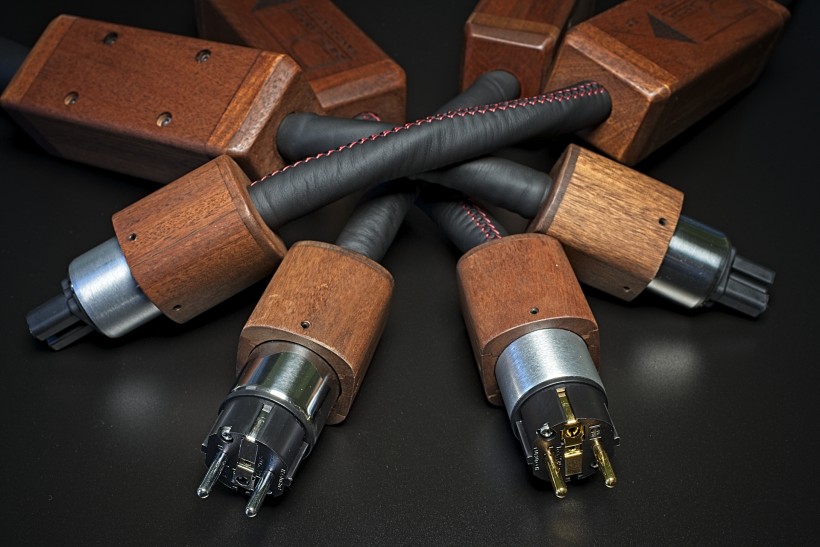
And yet, the 3D-R gave it another boost in performance. It sort of energized the music bringing the sound even closer to the live-like level of energy, further improving dynamics, both on the macro and micro scale, and pushing the boundaries of transparency and clarity of the sound even further. In comparison, the gold version (3D) seemed warmer, and less neutral even though before I had not thought about it even for a second when comparing it to the LessLoss. And so I tried it also with Pacific and again the result was similar – even more live-like performance in terms of energy and dynamics, but also a slightly better resolution. Last but not least, I also tried the two DL Custom Audio power cables with my Circle Labs M200 (see the review HERE) power amp and the results were similar. This allows me to risk a conclusion, that the ‘R’ version is a perfect match for tube devices or those that even without tubes are a bit warm sounding. The ‘R-less’ version, due to gold-plated contacts will work great whenever one needs to add a touch of richness and warmth to the sound. Still, I think you should test it yourselves in your systems because even with my very transparent-sounding, solid-state preamplifier I liked the ‘R’ version even more than the ‘gold’ one.
DL Custom Audio 3D Connect RCA interconnect
The next in line (chronologically the second) was DL Custom Audio’s RCA 3D interconnect that replaced directly the Soyaton Benchmark between LampizatOr Pacific and GrandiNote Shinai. This time the differences were not that big, or as obvious as with the power cables, but I didn’t expect them to be. After all, Soyaton Benchmark became a part of my reference system for a reason. That is why I was focused primarily on looking for differences, not necessarily advantages of the 3D Connect interconnect. And the differences were quite clear almost from the start, at least some of them. With the DL Custom Audio interconnect sound wasn’t quite as incredibly open as with Benchmark, and there wasn’t as much air in it either (it’s sort of a hallmark of Benchmark cables that no other cables I know can match). Yet, it still outshone in this respect many other top cables I’d dealt with in the past. Without comparing it directly to Benchmark, 3D Connect would be my number one in terms of how spatial, how vivid, open, and three-dimensional the sound gets with it.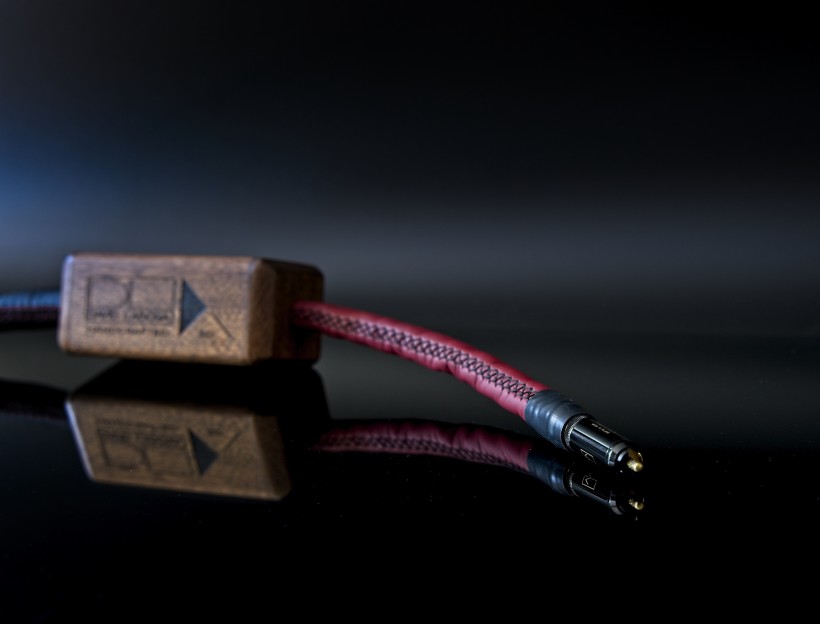
At the same time, with the DL Custom Audio’s IC the sound seemed richer, particularly in the midrange, more saturated, more creamy, or velvety, in which reminded me more of my other reference interconnect, namely Hijiri Kiwami. For all those who love vocals, acoustic instruments, or any music that focuses primarily on the midrange area the tested interconnect might be exactly what you’re looking for. Also because while these features not necessarily are associated with high resolution, the DL Custom Audio 3D did have a slight edge over Soyaton, and Kiwami in this regard, while being on par with the Bastanis Imperial (see the review HERE). It’s not at all about it being focused on midrange, or emphasizing it, as both range extremes were fantastic, but that the middle part of the band was particularly refined, smooth, colorful, and all that comes in handy for midrange-focused music.
It was pretty clear to me, that a choice between 3D Connect and Soyaton Benchmark (and Imperial, and Kiwami) would most likely be based not on class difference, as they both (all) offered excellent performance, but rather on individual needs or preferences. I’d say that if either the whole system, or the user, needed more spark, and more vividness in the treble area, Benchmark would probably be the preferred choice. On the other hand, if either system or user needed more saturation, more weighted sound, and more powerful slam in the bass, 3D Connect would be the way to go. As for 3D imaging, the reviewed cable had a slight advantage while when it later came to comparing speaker cables the situation reversed in this regard with Benchmark taking the lead.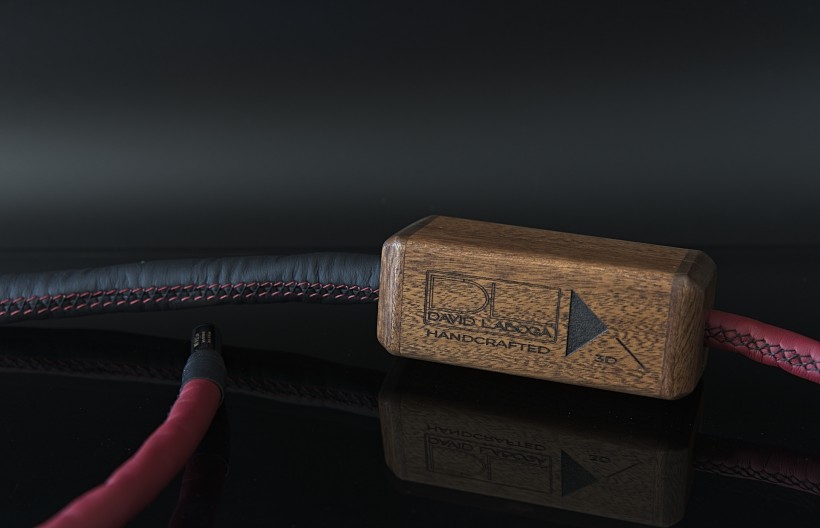
This finding was interesting considering that Soyaton IC features even more gold in it, as both, its conductors and plugs are gold-plated – in other words, it seemed that it wasn’t the gold that made the difference in this particular regard. Anyway, you have to remember that DL Custom Audio offers also the 3D-R Connect version terminated with rhodium-plated connectors, and I am betting (which later, after listening to the XLR version became a certainty) that it delivers more sparks in the treble, that its sound is a bit more lively, more energetic. I’d like to stress one more time – the differences I’ve been pointing out are tiny, it’s more about the slight advantage of one of these excellent interconnects over the others in some regards, not their actual weaknesses. After all, at this truly high-end level of performance what counts, are tiny differences that make the said product more suitable for a particular system and its user’s taste.
So what I’d like you to take away from this part of the test is that if your system is very neutral (I assume that at the certain price level that the DL Custom Audio cables are offered for, all systems are good and they can’t really sound bright or harsh or unbalanced) and you would like to soften it just a notch, add a bit weight to it, push it gently towards more natural presentation, 3D connect will do such job perfectly while ensuring the overall top-level performance. It is a well-balanced, highly resolving, rich-sounding interconnect with a ‘center of gravity’, so to speak, placed a bit lower than the aforementioned Benchmark. It does sound very natural while remaining very neutral too, it is smooth, coherent, and fully capable of delivering an ultimate bass punch when needed. Same as the Hijiri Kiwami it presents treble in a bit ‘safer’, or ‘sweeter’ way, meaning that unless you play some really poor recordings with lots of bright, harsh high tones, the sound won’t get unpleasant or irritating. And it is achieved without actually losing any energy in the upper end. It’s still there but it is presented in a slightly less aggressive, hence more pleasant way. Because yet another feature that the 3D Connect has in common with actually all my other interconnects, Kiwami, Benchmark, and Bastanis Imperial, is this so attractive non-fatiguing way of delivering music that allows you to listen to it for hours and hours and still crave more.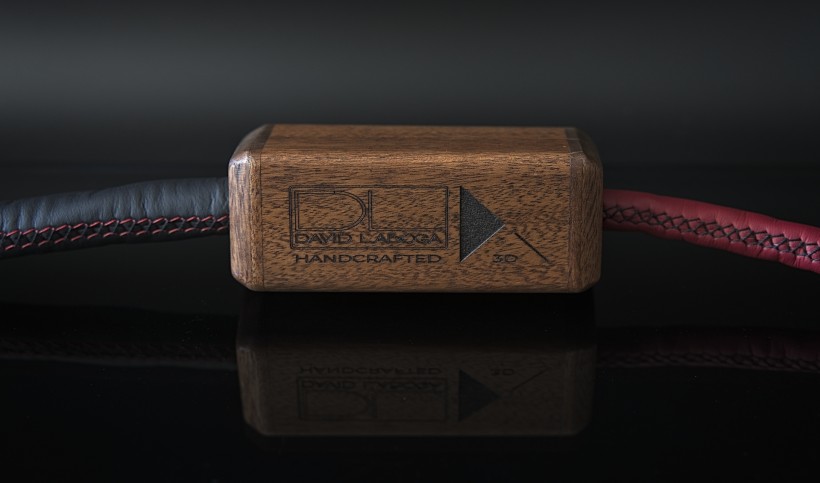
DL Custom Audio 3D-R Custom Two-in-One Connect Speaker Cable
Now, all that you’ve just read regarding the 3D Connect interconnect applies to it playing in the system alone (or with the DL Audio’s power cable powering LampizatOr Pacific). But I’ve mentioned before, that I was hoping for the synergy effect. The power cable added to it more energy, more slam in the lower region, and more authority. Since the speaker cables’ primary designation was ‘R’ (rhodium-plated) I hoped it would add a bit of a spark to the sound complementing the beautifully rich, highly resolving, colorful, and velvety interconnect. And I wasn’t wrong.
Replacing speaker cables, especially with four connectors on each end, takes much longer than switching an interconnect. It simply can’t be done very quickly which leaves several minutes long pause between listening to the one or the other compared set. And yet, also this time, I made some observations almost right away. On the one hand, the incredible size of the soundstage, which I appreciate Benchmark (particularly the speaker cable) for, was not topped by the 3D-R. It was very close, so beyond any complaints, but not quite as wide and deep, hence only second to the best of the best in this regard that I know. On the other hand, it delivered on what its name promised – imaging that was even more three-dimensional. Bodies had more mass, were more palpable, more present with it, than with Soyaton. Both these features combined into a presentation set a bit closer to the listener, with slightly bigger phantom images particularly those in the forefront. Benchmark, in comparison, delivered a touch more distant presentation.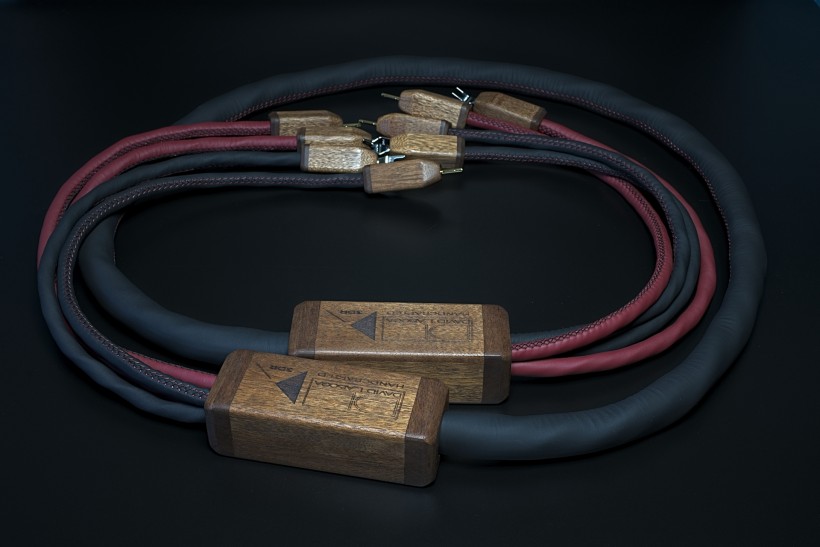
I started with the good old „Jazz at the Pawnshop”, a famous live recording, and soon several others of this type followed because live recordings were the ones that gained the most when all three DL Custom Audio cables joined forces in my system. The rhodium-plated connectors (at least I assumed it was them) added a bit of spark in the upper range, a touch of glow around metal cymbals, and a tiny little bit of necessary sharpness or crispness to brass and wind instruments. There was seemingly also more energy, particularly in the upper midrange – not much, not enough to disturb an overall balance of the presentation, but enough to make it even more live-like, which in the case of all those concert recordings did the trick for me.
I’ve never claimed that I expect an ultimate high fidelity from my system (or any reviewed components) but rather a similarity, as close as possible, to all those fantastic live performances I love to go to. The synergy effect from using the whole DL Custom Audio 3D & 3D-R set gave me just that while maintaining this truly high-end level performance, I may add. It was a classy presentation that kept me adding more albums to the playlist even way past my bedtime…  It also meant playing at quite quiet levels so as not to disturb family, and interestingly it did not affect the performance in terms of how detailed, resolving, and dynamic it was. Often (although admittedly it’s more about amplifier-speaker relations) playing at low volume levels results in a less refined sound, but not this time.
It also meant playing at quite quiet levels so as not to disturb family, and interestingly it did not affect the performance in terms of how detailed, resolving, and dynamic it was. Often (although admittedly it’s more about amplifier-speaker relations) playing at low volume levels results in a less refined sound, but not this time.
The next day I moved to albums with music of a grander scale. Such as the orchestral soundtrack from „Rogue One” which instantly blew me away, almost literally, as I kept pushing the volume up and up encouraged by the sounds coming from my speakers. It was powerful, yet very clean and transparent, highly detailed yet coherent, and well-organized despite the grand scale, mass, and sheer dynamics of the orchestra. The presentation was impressive also in terms of how orderly it was, how every single element of this music had its clearly defined place in a 3D space, and how devoid of any nervousness and blur it was. The moments of the total, absolutely black silence between tracks or even between individual sounds indicated an amazingly low level of background noise and offered an explanation of why the performance was so orderly, so pure, so transparent, and why the individual instruments sounded so rich, so colorful, and so dynamic.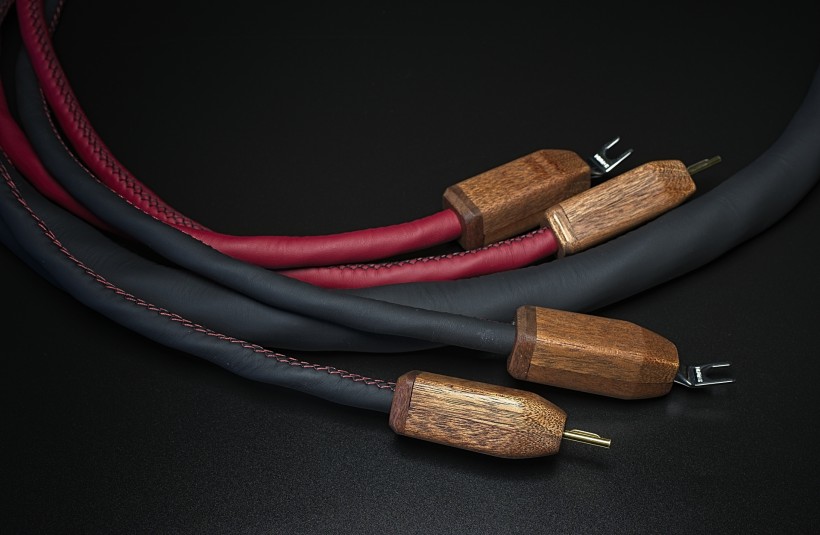
Long story short, the speaker cable turned out to be the one that dotted the „Is” and crossed the „Ts” in terms of conveying the ambiance or mood of every recording I threw at it. While the dynamics, even when it came to wide swings in the aforementioned „Rogue One” or original „Predator”, or Beethoven’s Symphony No. 9, was impressive, the overall character of the presentation with the whole 3D and 3D-R loom in my system was rather calm and organized. There was space for energy and enthusiasm within this presentation, for the expression of emotions, but it was all done with a proper level of control. Hence no matter how wild the tracks were, the sound coming from the speakers was never chaotic, there was never a feeling of lost control.
Finally, I performed a little experiment. When I spoke with David Laboga he told me, that it is absolutely crucial for the performance to connect all connectors to the amplifier and speakers. That only gold-plated and rhodium-plated connectors’ combined effort offered an intended, top-quality performance. Since it was so easy to check, I did. Disconnecting gold-plated bananas shifted the balance of the sound up. It wasn’t a bad sound but it lacked this lush richness of midrange, the slam in the bass, and the sweetness of the treble. Disconnecting rhodium-plated spades on the other hand removed the desired spark in the upper part of the range, decreased the drive and energy of the sound, and its tightness. It also shifted the overall balance down. Again, it wasn’t such a bad sound as Mr. David Laboga claimed it would be, but instead of top-shelf speaker cable 3D-R Custom Two-in-One Connect in both cases turned into one of many good ones. Connecting all 16 connectors on both ends in both channels back was a true relief for my ears.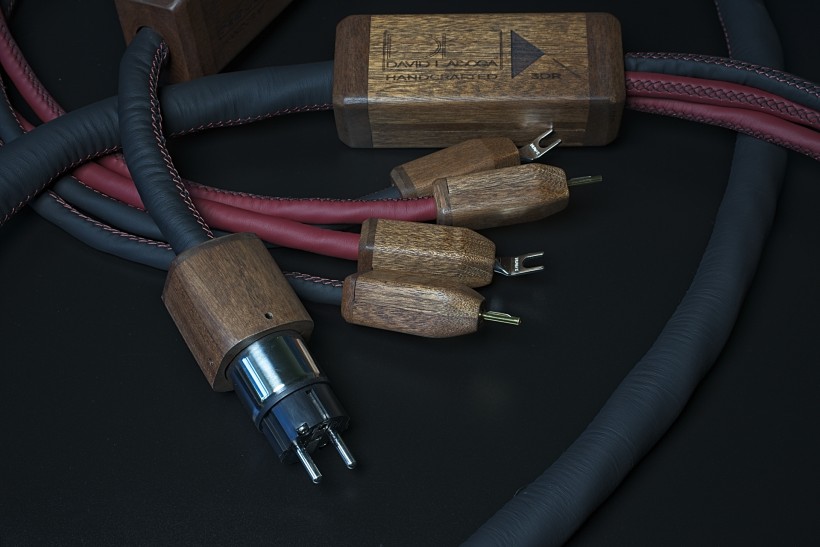
This, apart from the summary, was initially to be the end of the review. But… Mr. Laboga called me and offered to send another power cable, this time with rhodium-plated contacts and I gladly accepted (and you’ve read this part already). I also mentioned that I was to receive an XLR interconnect from the same price range as the 3D series (van den Hul the CNT) so he offered to send one of his as well. When they arrived and I gave them a chance I decided to add a paragraph or two more for the most patient readers :).
DL Custom Audio 3D-R XLR IC
Since in my system I use only unbalanced sources the only way I could try the 3D-R Connect XLR interconnect was between my latest additions to the reference system, namely Circle Labs P300 and M200 set. Both are fully balanced designs and while my preamplifier is a custom unit with both XLR and RCA outputs (the regular model features only XLR ones) the preferred connection is the balanced one. So first, I listened for a while to this set with Pacific as a source connected to the preamp using Benchmark RCA IC, and speakers were driven via Benchmark speaker cable. The already tested DL Custom Audio power cable (gold-plated plugs) still fed my DAC, both Circle Labs components were powered using LessLoss cables. Both CL components were initially connected using the only XLR interconnect I own, the KBL Sound Zodiac. It’s a reasonably priced cable, a very good one for the price yet 7-8 times less expensive than the tested one. After I ‘got used’ to the sound I replaced Zodiac with 3D-R.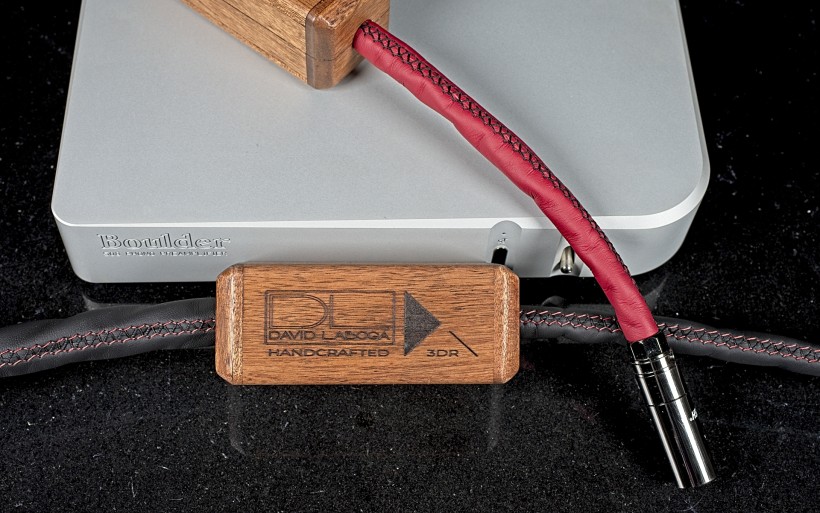
I know that there are a lot of people who firmly believe that cables don’t really matter, including such icons of the audio industry, as, for example, Mr. Jeff Nelson of Boulder Amplifiers, whom I had the pleasure to meet recently. Yet, if there was someone sitting next to me and would tell me that they couldn’t hear the difference between Zodiac and 3D-R Connect they would have lost my whole respect for them, no matter who they were. Just this one cable between the preamplifier and the amplifier made a clear, unambiguously positive difference. Zodiac in this case was clearly a limiting factor, a bottleneck if you will. With the 3D-R the sound opened and cleared up as if someone lifted a veil between me and the speakers and at the same time opened a window in the room and let tones of fresh air in. It felt like a jolt of energy, and listening to the music got much more exciting and immersive.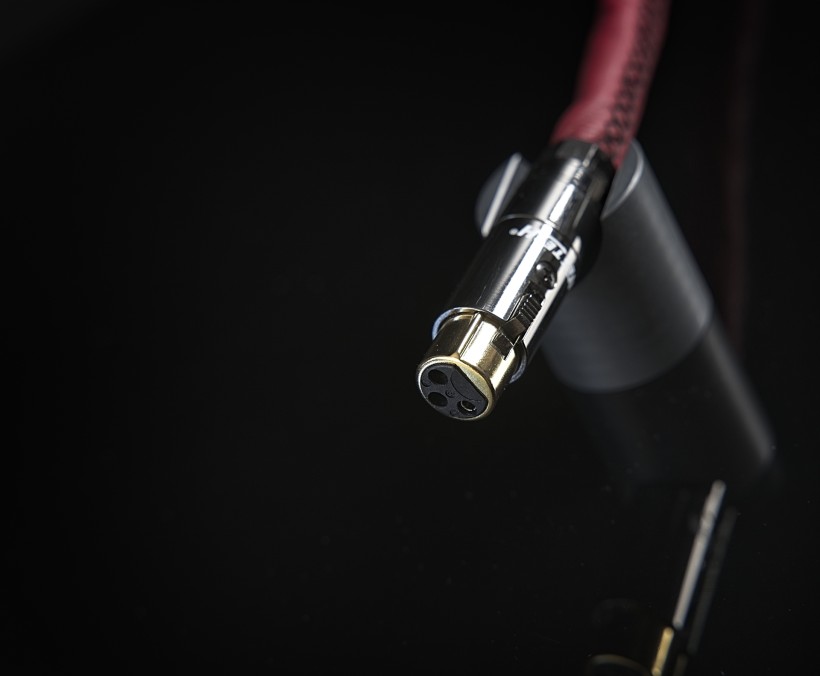
I don’t want to repeat everything I already said about RCA interconnect so let me just make it clear that the 3D-R XLR offers a very similar sonic character, all the same features with a small caveat though. I mentioned before that I would assume that rhodium-plated connectors could add a bit more spark to the treble, maybe even more energy, and they did! Obviously, the choice of plugs’ finish will be dependent on what you need/expect and on your setup. In my case, in this particular system, it seemed that the rhodium-plated or 3D-R version would be the way to go. To be clear, it wasn’t only the first wow effect. After several days my opinion didn’t change.
Then, yet another thing happened. I visited the Polish Boulder distributor and came back with this brand’s phonostage, the 508 (you can find the Polish review HERE). As some of you know, the aforementioned Jeff Nelson, founder of the brand and its chief designer uses only balanced circuits and connections and that’s also the only type of inputs and outputs featured in Boulder 508. Using balanced phono IC (by Jorma) to connect my J.Sikora KV12 tonearm with 508 I forwarded the signal from the latter to P300 using the 3D-R XLR IC and then similarly priced van den Hul The CNT XLR to deliver signal to M200 power amp and later I swapped the latter two around. Without getting into details let me just say that both are excellent though different enough interconnects to easily pick one of them best suiting the needs of the setup or user. Of these two it is the CNT that is even smoother, even more silky so a bit more like the regular DL Custom Audio’s 3D. Having only one pair of each my actual choice boiled down to adding some spark in one point in the system and a bit more smoothness in the other. I rather quickly settled on using van den Hul between the quite neutral Boulder phonostage and the preamplifier and DL Audio’s product between the preamp and the power amp. This choice resulted in the most complete, refined, and totally immersive sound.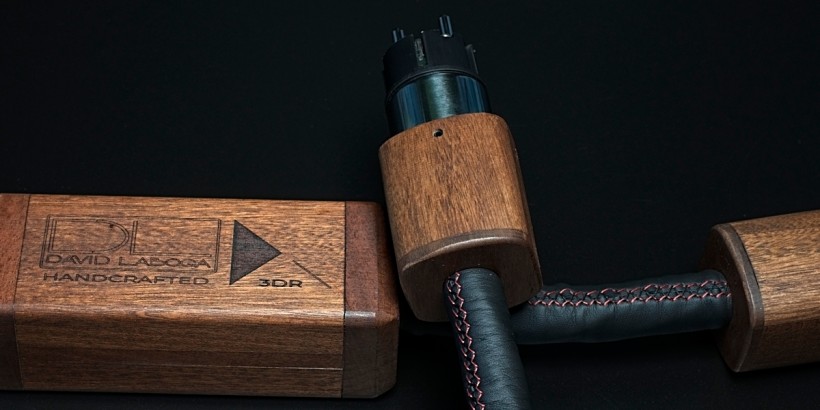
Summary
As I’ve mentioned at the beginning, I waited for this review to happen for a while encouraged by the great sonic results offered by David Laboga Custom Audio digital cables. And it was worth the wait. The DL Custom Audio 3D + 3D-R Connect set turned out to deliver an excellent, top-notch performance. Each of them individually, and even more so the whole loom, offered a set of features that combined delivered a very natural, live-like performance. The top resolution, remarkable imaging, seemingly unlimited dynamics, clarity and transparency, ability to convey all the tiniest details and subtleties caught on the tape (or in a file), and all the emotions – it’s all there. What impressed me the most, and which is indicative of the top performance, was how orderly and calm (which means lack of nervousness not of energy) the presentation was regardless of the music genre.
I can’t say that these are the best cables in the world – no such thing in my opinion, as it is always a matter of not only top performance but also a synergy with the particular system (and user), but I am pretty confident that in many cases David Laboga Custom Audio top line can compete with most of the biggest brand’s products. It won’t win each such duel, but it will some of them, and probably allow you to save a ton of money. This is not to say, that these are cheap cables, but only that there are many ways, way more expensive, but not necessarily better ones. Oh, and one more thing – David Laboga Custom Audio Connect cables will win, in my humble opinion, most beauty contests.  From me, our top award, the mighty
From me, our top award, the mighty
Prices (when reviewed):
- 3D Connect IC RCA & XLR: 6.350 EUR / 1,5m
- 3D-R Connect IC RCA & XLR: 6430 EUR / 1,5m
- 3D Connect Power Cable AC (for conditioners and amplifiers): 8.490 EUR / 1,8 m
- 3D-R Connect Power Cable AC (for conditioners and amplifiers): 8.490 EUR / 1,8 m
- 3D-R-Custom Two-In-One Connect: 6.030 EUR / 2x2m; ( Custom Order ) each additional 50cm: 1850 EUR
Manufacturer: DL Custom Audio ; David Laboga
Associated equipment:
- Digital source: a custom passive server with WIN10, Roon, Fidelizer Pro 7.10, JCAT NET XE, and JCAT USB XE cards with FERRUM HYPSOS Signature power supply, KECES P8 (mono) linear power supply for the server, JCAT USB Isolator
- D/A Converter: LampizatOr Pacific 2 +Ideon Audio 3R Master Time (USB signal regenerator)
- Analog front end: J.Sikora Standard MAX turntable, J.Sikora KV12 tonearm, J.Sikora KV12 MAX tonearm, AirTight PC-3, phono stages: Grandinote Celio MK IV, ESE Lab Nibiru V 5.
- Power amplifiers: GrandiNote Shinai, Circle Labs M200, Art Audio Symphony II (modified)
- Preamplifier: Circle Labs P300
- Loudspeakers: GrandiNote MACH4, Ubiq Audio Model ONE Duelund Edition.
- Interconnects: Bastanis Imperial x2, Soyaton Benchmark, Hijiri Million, Hijiri HCI-20, TelluriumQ Ultra Black, KBL Sound Zodiac XLR, David Laboga Expression Emerald USB, David Laboga Digital Sound Wave Sapphire Ethernet
- Speaker cables: Soyaton Benchmark
- Power cables: LessLoss DFPC Signature, Gigawatt LC-3
- Power: Gigawatt PF-2 MK2 and Gigawatt PC-3 SE Evo+; a custom power line with Gigawatt LC-Y in-wall cable; Gigawatt G-044 Schuko and Furutech FT-SWS-D (R)
- Network: Silent Angel Bonn N8 + Silent Angel Forester F1 + optical LAN isolator
- Racks: Base VI, Rogoz Audio 3RP3/BBS
- Anti-vibration accessories: ROGOZ-AUDIO SMO40 and CPPB16 platforms and ROGOZ AUDIO BW40MKII feet, Franc Accessories Ceramic Disc Slim Feet and Wood Block Platform, Graphite Audio CIS-35 and IC-35


